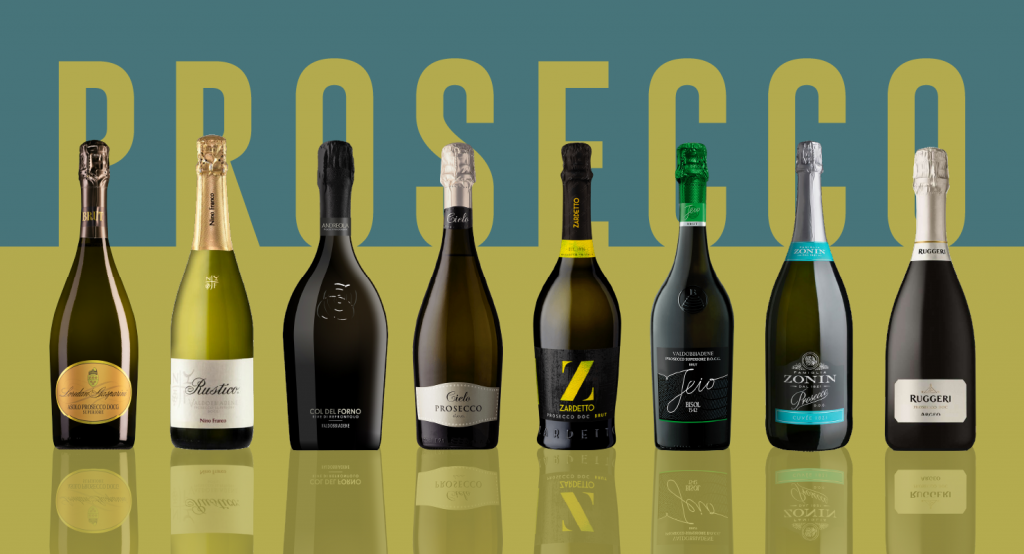Great Value Wines: 8 Proseccos for Under $25

As much as wine people love indulging in the sparkling effervescence of great Champagnes – from uncorking to sipping to delighting in the bubbles – younger connoisseurs aren’t likely to spend $50 to appreciate the delicate beads and yeasty, brioche nuance that come with such expense. Instead, they usually embrace the more affordable and equally bubbly Prosecco, which is straightforward, versatile, refreshing and, most important, friendly on the purse and wallet.
In case you didn’t know, you can easily use Prosecco as the base for your summer Aperol Spritz, making for a fun, laid-back and fashionable drink you want to share with friends or on social media. Even though you will probably realize one day that Champagne is ultimately the better drink, Prosecco will always be there for some zestful fun.
While the winds of change in the sparkling wine world are being driven by more festive, younger consumers, especially in Britain, the U.S. and France, Prosecco’s success is as much about marketing and branding as it is about its fruity, fizzy style and broad accessibility.
In 2009, Italians came to the realization that they should take a page from the Champenois playbook and protect their native Prosecco. That was the year the Italian Ministry of Agriculture officially changed the grape variety’s name to glera and gave Prosecco, which is named after the village of Prosecco, near the city of Trieste, the status of “protected geographic indication,” or DOC, as it is known. This prevents anyone outside the region, most notably King Valley in southeastern Australia, from having a finger in this lucrative pie. Today, Prosecco is made from an expansive area, from Veneto to Friuli-Venezia Giulia, covering nine provinces, and in 2019, the Prosecco Hills, between Conegliano and Valdobbiadene, were recognized by UNESCO as a World Heritage site.
Whereas the bulk of bland Prosecco DOC wines usually come from fertile, low-lying plains, the two DOCGs that split from the DOC in 2009 – Conegliano-Valdobbiadene Prosecco (Superiore) and Asolo Prosecco (Superiore) – typically come from higher, steeper hills. The difference in quality between the two can be distinct, as the maximum yield for DOCG is 13.5 tons per hectare, compared with 18 tons per hectare required by Prosecco DOC.
A cru-like idea was grafted onto the Conegliano-Valdobbiadene DOCG in the same year when two DOCGs were separated from Prosecco DOC, with 43 communes amid the steep slopes making a terroir-specific style of Prosecco. These Proseccos are vintage wines, and the maximum yield is 13 tons per hectare, slightly lower than the plain DOCG. The best arguably comes from the south-facing steep Cartizze in Valdobbiadene, a 107-hectare vineyard that is considered the “Grand Cru” of Prosecco. And the wines are sold as Superiore di Cartizze, in a bid to take Prosecco up market.
We know that most Proseccos are made by tank method, otherwise known as the Charmat method (named after Charmat Martinotti), which differs from the traditional method in that the secondary fermentation takes place in the tank to retain fresh fruit. A small number of Proseccos are, however, made in the traditional, Champagne method – in the new category of Col Fondo (meaning “with sediment”) – with the bottles sealed by crown caps. There is no disgorgement or dosage, and this results in a cloudy and creamy, dry petillant style that at its best offers exotic complexity, setting it apart from conventional Proseccos.
Over the last few years, we feel there has been a trend toward the premiumization of Prosecco, with eyes on superior quality and more expensive offerings. Producers seem to want to make it a more serious and convincing drink with a sense of place that embodies more naturalness rather than just the fun, fresh and fizzy pour that is widely appealing to younger consumers. But as a wine heavily reliant on cross-vintage blending to form a consistent, non-vintage style, it’s hard to say if Prosecco can shake off its “commodity” style, which is exactly what makes it predictable, popular and, of course, so affordable.
For most conventional Proseccos, a higher dosage of Extra Dry seems to be a more deservingly popular style, but I am more inclined to pick Brut, which is allowed a lower dosage level of residual sugar and so will be less likely to trick your palate into an effervescent love of bubbles and “fruitiness.”
Below are our eight picks for non-vintage Prosecco in the Brut style for under $25 (and most of them around $15). Tasted recently, they are widely available on the market now. Whether plain Prosecco, DOCG or Rive wines, these Proseccos aren’t of the bland and uninteresting variety, the likes of which usually end up as the base ingredient for an Aperol Spritz. And as most online retailers don’t specify when Prosecco wines are bottled, remember to ask for the latest release so you can enjoy them at their freshest and bubbliest.
– Zekun Shuai, Associate Editor
Conte Loredan Gasparini Asolo Prosecco Superiore Brut NV – JS93
U.S. Price: $16
Andreola Prosecco di Valdobbiadene Superiore Col del Forno Rive di Refrontolo Brut NV – JS92
Wine.com: $22.99
Nino Franco Prosecco di Valdobbiadene Superiore Rustico Brut NV – JS92
Zachys.com: $18.99
Wine.com: $19.99
Cielo Prosecco Brut NV – JS91
Totalwine lowest price: $7.79
Bisol Prosecco di Valdobbiadene Superiore Jeio Brut NV – JS90
Zachys.com: $14.99
JJBuckley.com: $19.94
Ruggeri Prosecco di Treviso Argeo Brut NV – JS90
U.S. Price: $14
Zardetto Prosecco Z Brut NV – JS90
Wegmans.com: $10.99
Wine.com: $13.99
KLWines.com: $14.99
Zonin Prosecco Cuvée 1821 Brut NV – JS90
Wegmans.com: $10.99
Wine.com: $13.99